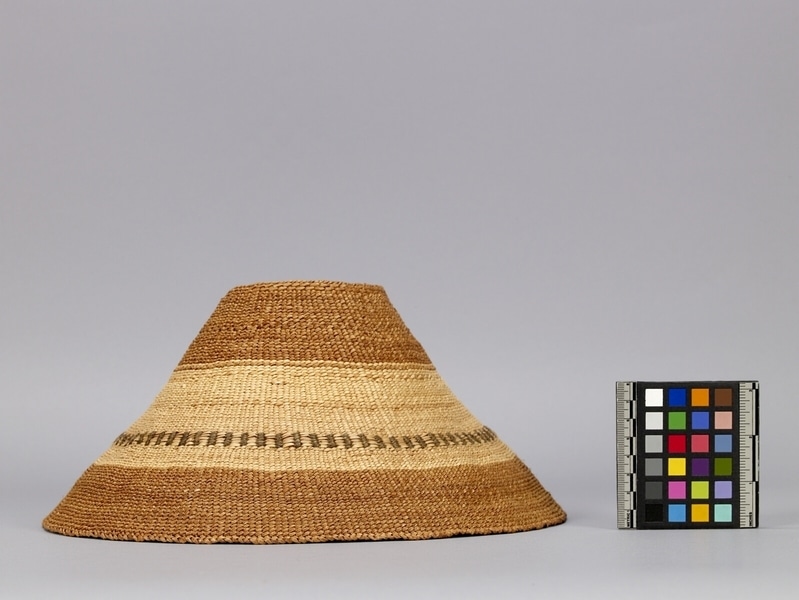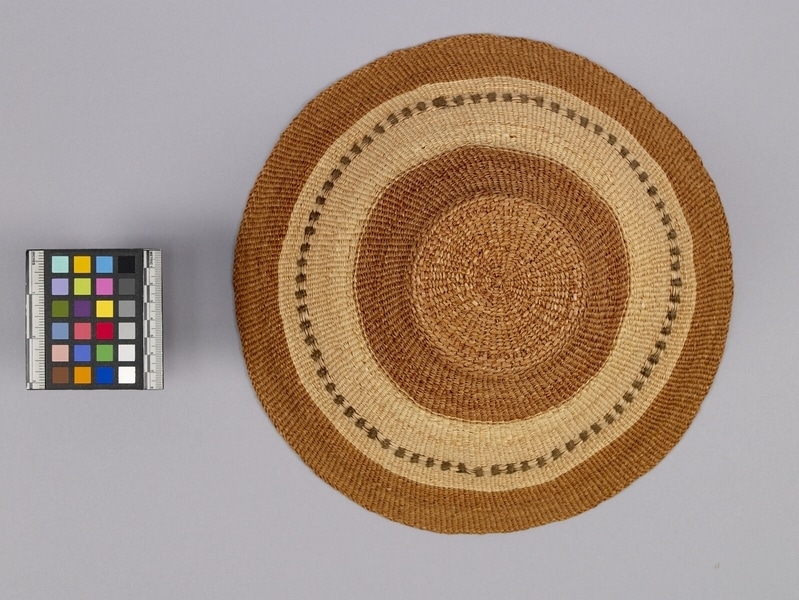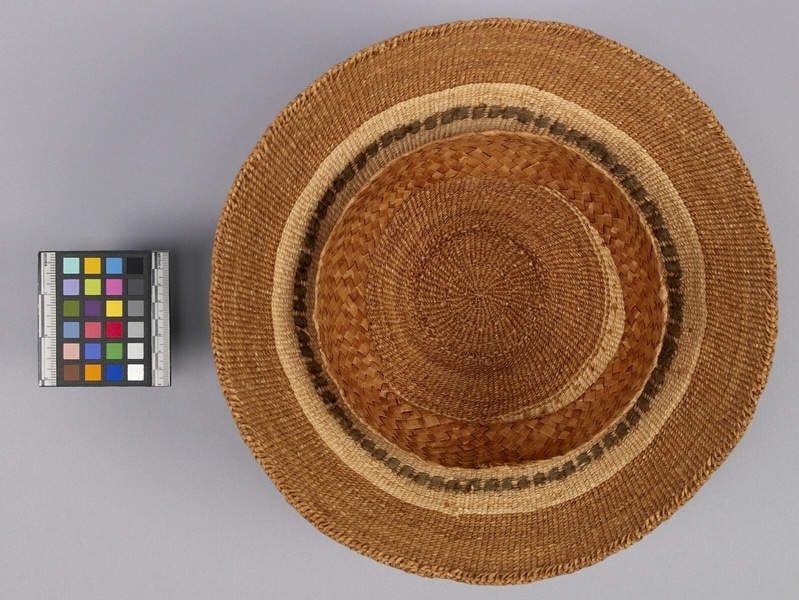Basketry Hat Item Number: Nbz902 from the MOA: University of British Columbia



Description
Twined, dome-shaped, basketry hat with flat top. Woven with red cedar bark with a white band around the centre, which is spruce root. There is a greenish-black coloured band of dyed cedar bark near the bottom of the white coloured area. The inside of the hat has a wide, diagonally plaited cedar bark hat band, which is sewn on with spruce root. The stitches where the hat band is attached are visible on the exterior of the hat.
Narrative
This hat was modelled after one worn by the Chief of Wentuisen (Nanaimo Harbour) in a portrait by Jose Cardero. The ink and wash drawing is in the collection of the Museo Naval MS 1725-5.1, Higueras 2947, Sotos 647. It was featured in the Vancouver Maratime Museum's exhibit and catalogue "Enlightened Voyages". At that time enquiries were made at Musqueam as to whether anyone would be able to reproduce the hats in the portraits (see also 1664/2) and Rena's daughter Wendy Ritchie was contacted. She passed the information along to her mother, who then decided to weave replicas. Rena chose to use spruce root in this hat because the portrait showed a band of white, and she didn't know what else it could be. She was afraid to use cat-tail or anything else because it might not last as long.
Cultural Context
basketry; traditional clothing; contemporary art
Specific Techniques
This hat was woven using double strand twining, with triple strand twining used along the edge at the top. The hat band is woven using diagonal plaiting. Red cedar bark and spruce root are used for the red and white portions; the green-black dyed portions are cedar bark dyed with a plant that is found in the Fraser Canyon. It has a bluebell-like flower on it that hangs off the rocks in the summer, when its really hot. These are picked and dried for future use. She breaks them up and boils them with tea leaves. This is a natural dye used by the Nlaka'pamux. In the old days they also used the bark from the fresh hemlock.
Item History
- Made by Rena Point Bolton (Maker) in British Columbia, Canada during 1995
- Collected in Terrace, British Columbia, Canada
- Owned by Rena Point Bolton before December 4, 1995
- Received from Rena Point Bolton (Seller) and Museum of Anthropology Shop Volunteers (Funding source) on December 4, 1995
What
- Name
- Basketry Hat
- Identification Number
- Nbz902
- Type of Item
- hat
- Material
- cedar bark, spruce root and dye
- Manufacturing Technique
- plaited, dyed and twined
- Overall
- height 14.6 cm, diameter 31.9 cm
Who
- Culture
- Coast Salish: Sto:lo
- Creator
- Rena Point Bolton (Maker)
- Previous Owner
- Rena Point Bolton
- Received from
- Rena Point Bolton (Seller) and Museum of Anthropology Shop Volunteers (Funding source)
Where
- Holding Institution
- MOA: University of British Columbia
- Made in
- British Columbia, Canada
- Collected in
- Terrace, British Columbia, Canada
When
- Creation Date
- during 1995
- Ownership Date
- before December 4, 1995
- Acquisition Date
- on December 4, 1995
Other
- Item Classes
- basketry
- Condition
- excellent
- Current Location
- Case 7
- Accession Number
- 1664/0001